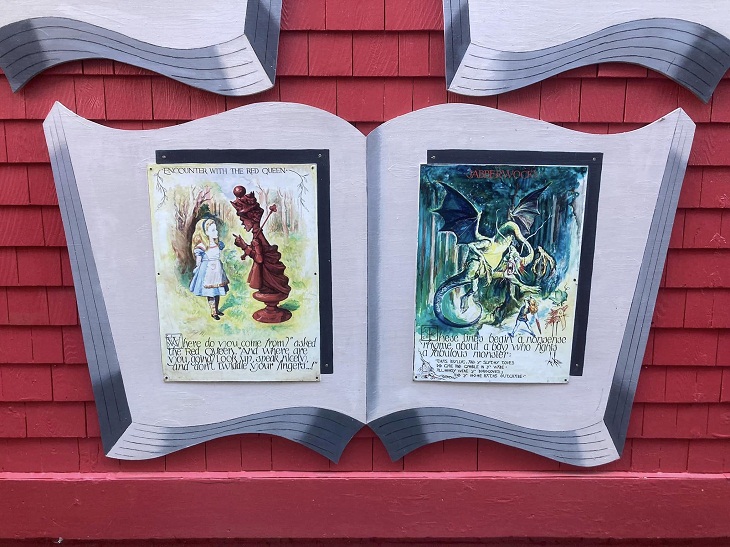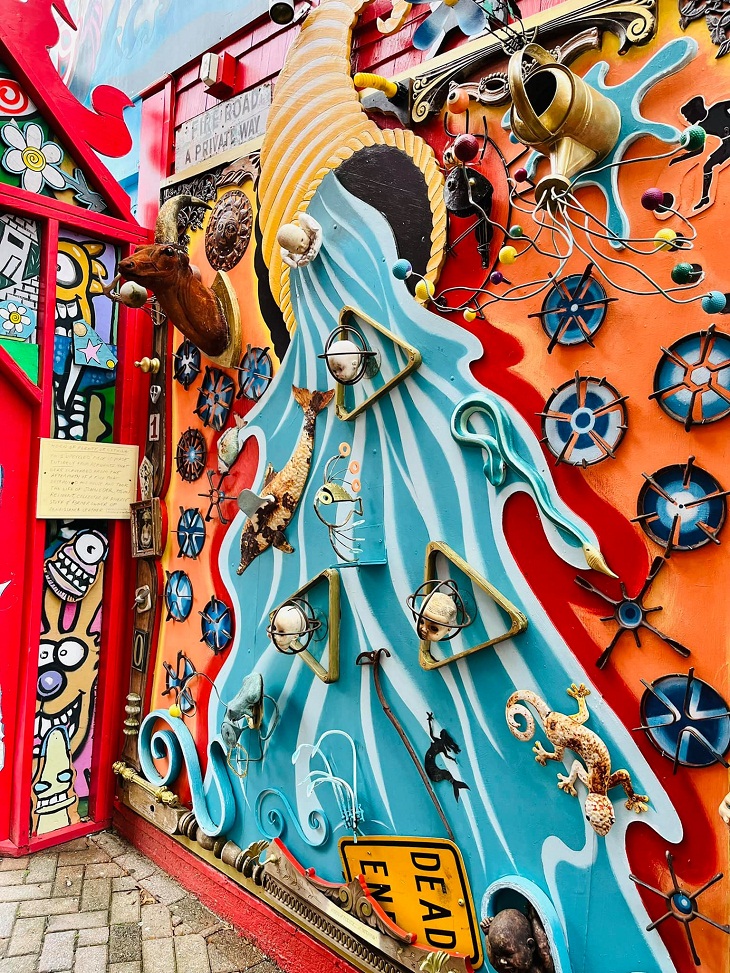
This lane, tucked away among the bustling city streets, is a tribute to Berlin's rich creative past. Visitors are met with an explosion of colors, elaborate murals, and thought-provoking inscriptions that represent the spirit and history of the city. The alleyway also includes various galleries, studios, and small shops, making it a center for the local creative scene.
Haus Schwarzenberg's artistic landscape is in a perpetual state of flux, mirroring the ephemeral and tumultuous essence of street art itself. Nearly every week, fresh pieces are added, modified, or repurposed, shaping an ever-changing collage in this urban retreat. Renowned street artists, including El Bocho, Miss Van, Stinkfish, Otto Schade, and others, play a part in this ongoing artistic transformation. A notable exception is Jimmy C's enduring portrayal of Anne Frank, which remains untouched and intact within the alley.
Bukit Bintang, which translates to "Starhill, is a district that attracts a substantial number of visitors in Kuala Lumpur. It boasts some of the city's largest and most upscale shopping malls, fine dining establishments, and the renowned Jalan Alor, a hub for street food.
However, in the late 2010s, Kuala Lumpur City Hall decided to transform these streets into art ventures. The majority of the murals that today grace Bukit Bintang's iconic roads were completed by December of the same year. Most of the art in the central lanes that connect Bukit Bintang's key city blocks is vibrant murals depicting natural features such as rivers, jungles, and Southeast Asian wildlife.
An important natural inspiration for the arts district can be found in the water stream painted on the floor, which follows the path of an actual stream that once flowed through the area.

Image source: Facebook
This colorful lane just off Ryder Street, nestled along Commercial Street, features elaborately made mural fragments, metal art sculptures, and paintings. Arnie Charnick skillfully created these artworks with the help of Bo Johnson, combining pieces from artist Bob Gasoi's murals that originally decorated the old Shop Therapy store from 1987 to 2010.

Image source: Facebook
Among the gems is an enthralling set of 10 4x6 paintings titled "Alice Alas," which represent scenes from the enchanted world of Alice in Wonderland.
Related: Mind-Bending Street Art That Looks Remarkably Real
Formerly referred to as "Dean Court," the narrow alley adjacent to Manchester's public library in New Hampshire has earned its popular nickname, "Cat Alley," and has transformed into an open-air exhibition space dedicated to feline-themed street art.
This alleyway, located near Elm Street, was given its official name thanks to the efforts of a pioneering cotton mill maker. However, it got its more famous nickname from a man named C.T. Durgin. Although Durgin's identity is unknown, an installed bronze plaque at the location reveals that he named the alley after seeing a brawl between two stray cats on the small highway. Cat Alley has been an unimpressive street for the bulk of its existence, notable primarily for its small size.
Cat Alley didn't achieve its current status as a celebrated street art hub until a dedicated local realtor decided to breathe new life into the narrow passageway. This enthusiast was able to secure the required approvals to decorate the alley with feline-themed art through effective fundraising and coordination with surrounding businesses. They collaborated with a resident artist who specializes in mentoring at-risk street artists on a transformative project that resulted in eye-catching wall murals covering the brick walls, effectively establishing an urban art gallery. In addition, the realtor was instrumental in the installation of a historical plaque.
Graffiti Alley is located in Toronto's Fashion District and runs for three city blocks adjacent to the popular Queen Street West, with the neighboring Rush Lane comprising part of the experience. It is a well-known destination for appreciating Toronto's dynamic street art and mural culture.
Graffiti Alley was once a haven for unauthorized street art and ignited a campaign for legitimacy led by the Queen Street West Business Improvement Association. In 2011, it gained recognition as a site of municipal importance, giving rise to StreetARToronto (StART), a program that offers funding and official consent for public murals and graffiti artworks.
Today, Graffiti Alley is celebrated for its role as a favored photoshoot location and its exhibition of artistry by famous figures like Duro the Third, uber5000, and ELICSER. It has also served as a location for small-scale street festivals and has been extensively featured in music videos, as well as briefly having a restaurant named after it.
Ghent's Werregarenstraat, also known as the "Graffiti Street," is undoubtedly one of the city's most captivating alleyways. What sets this narrow passageway apart is its unique status as an officially sanctioned street art tunnel. In 1995, the city of Ghent made the bold and visionary decision to designate this space as a canvas for graffiti artists, thus transforming it into a dynamic and ever-changing outdoor gallery where creativity knows no bounds.
The Graffiti Street has become a beloved cultural hub, attracting both local and international artists who come to leave their mark on its walls legally. And it's not hard to see why! Werregarenstraat is a visual feast, adorned with an assortment of colors, intricate murals, and thought-provoking messages that are sure to leave you in awe. The constantly evolving artwork reflects the vibrancy and creativity of the city's street art scene.
Visitors to Ghent flock to this alleyway to witness the transformation of its walls and to immerse themselves in the urban art culture that thrives there. Werregarenstraat stands as a testament to Ghent's progressive and artistic spirit, inviting everyone to experience its captivating graffiti-filled alley and become a part of its rich cultural tapestry.
Related: This Charming Street Art Compliments the Beauty of Paris
Balmy Alley Murals are a vibrant and iconic collection of street art and murals in San Francisco's Mission District that serve as a monument to the neighborhood's rich cultural diversity and social action. This short alleyway has evolved into a well-known open-air gallery, complete with a kaleidoscope of murals addressing various social and political topics.

Balmy Alley's murals date back to the mid-80s, when local artists began transforming the space into a canvas for expressing their opinions on issues such as human rights, immigration, gentrification, and environmental concerns. The artwork is noted for its powerful and thought-provoking statements, which frequently represent the community's hardships and hopes.
The artwork here is constantly evolving. New murals are regularly painted, and older ones are updated or replaced frequently, ensuring that the alley remains a dynamic expression of the changing identity of the neighborhood.